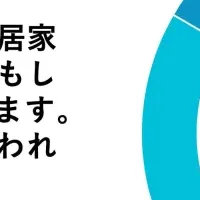
Study Reveals Alarmingly High Drug Overdose Death Rates in Medicaid Beneficiaries
Recent Study Highlights Drug Overdose Rate Disparity
A pivotal study published in the Journal of the American Medical Association (JAMA) has uncovered alarming statistics regarding drug overdose mortality rates among Medicaid beneficiaries. Conducted by health economists at RTI International, a nonprofit research institute, this groundbreaking analysis sheds light on the stark contrast in overdose death rates within the Medicaid population as compared to the overall U.S. population.
The findings of the study, released on December 6, 2024, are particularly striking: the overdose death rate among Medicaid beneficiaries was found to be nearly double that of the general populace across all age demographics. Specifically, there were 54.6 overdose deaths per 100,000 individuals among Medicaid recipients, contrasted with a rate of 27.9 for the broader U.S. population in 2020. This disparity is underscored by the fact that Medicaid beneficiaries, while making up approximately 25% of the nation's population, accounted for a staggering 48% (approximately 44,277 of 91,799) of all overdose deaths reported nationwide.
From 2016 to 2020, overdose deaths among Medicaid beneficiaries saw a considerable increase of 54%, upon which the study's authors emphasize the urgent need for enhanced interventions. Dr. Tami L. Mark, the lead author and director of Behavioral Health Financing and Quality Measurement at RTI, articulated the study's implications, stating, "Our findings demonstrate a critical need to ameliorate overdose fatalities within the U.S. Medicaid beneficiary population. More in-depth research is necessary to understand the underlying factors contributing to this heightened risk and to formulate effective responses."
The study utilized a comprehensive comparison of drug overdose mortality among Medicaid enrollees against the total U.S. population, stratified by age and sex. This analysis was facilitated by linking data from the U.S. Centers for Medicare and Medicaid Services (CMS) with the National Death Index provided by the CDC. Dr. Mark noted, "The ability to conduct this research was significantly enhanced by the unusual practice of linking CMS and CDC data, which is not commonly implemented. Ongoing access to linked datasets is pivotal for researchers and policymakers aiming to identify at-risk subpopulations and evaluate drug overdose mitigation policies."
This pioneering research marks the first extensive examination of the overdose mortality trend within Medicaid beneficiaries, spearheaded by RTI through its internal funding. The results signal a call to action for healthcare professionals, policymakers, and researchers alike to focus on the specific needs of this vulnerable population to formulate tailored intervention strategies.
For healthcare systems and stakeholders involved in Medicaid services, these findings should serve as a significant motivator to address these elevated risks. As drug overdose rates continue to escalate across the nation, the Medicaid demographic warrants heightened scrutiny and proactive measures to counter this escalating public health crisis.
For additional insights on RTI's initiatives and research regarding substance use, the full study can be accessed via JAMA, along with resources detailing their ongoing research in behavioral health.
- ---
Kerry Branon
Email: [email protected]
Phone: +1 919 541 7300
- ---
Topics Health)










【About Using Articles】
You can freely use the title and article content by linking to the page where the article is posted.
※ Images cannot be used.
【About Links】
Links are free to use.